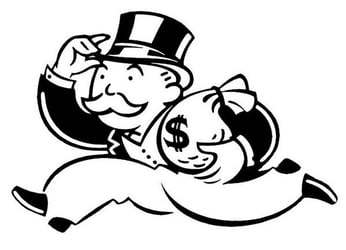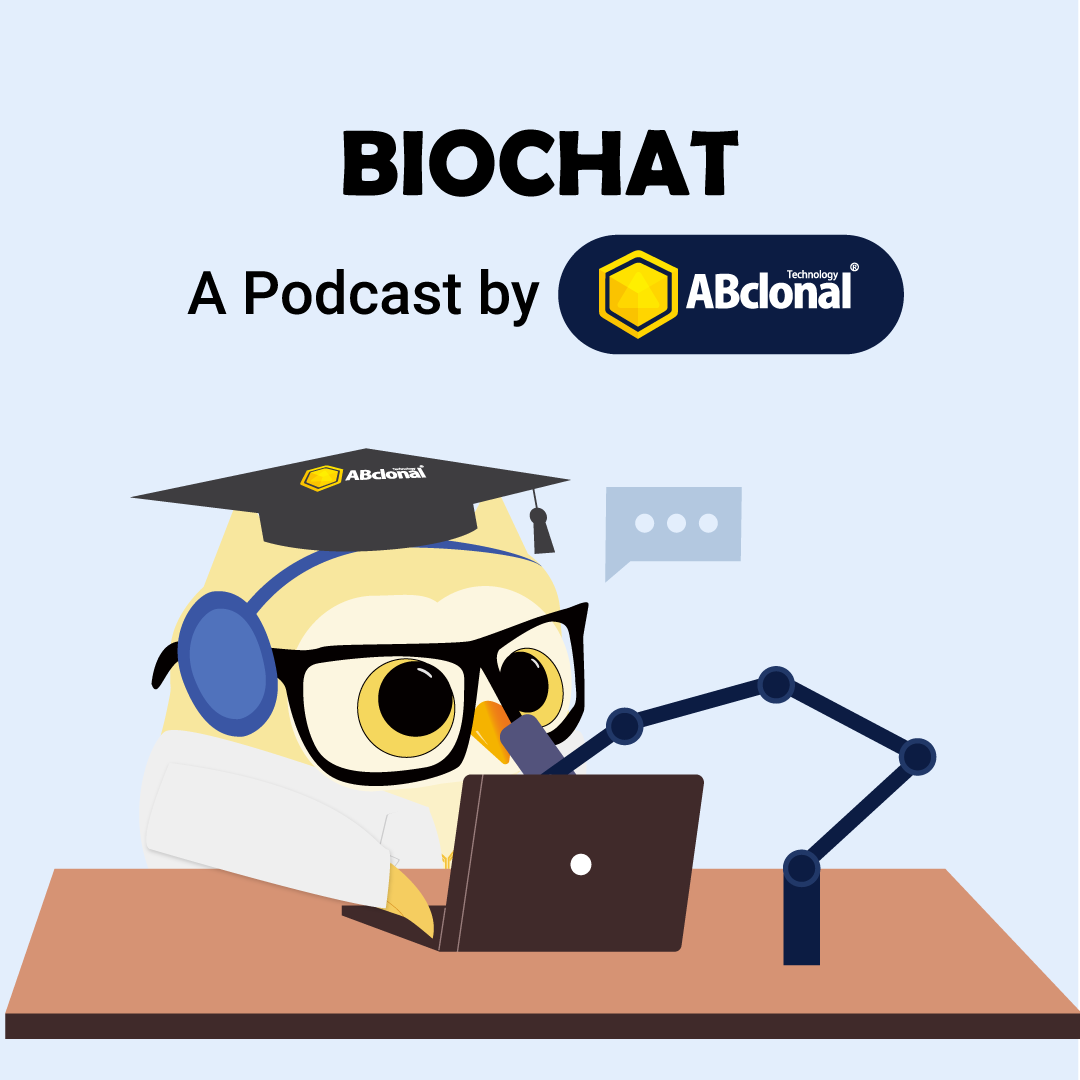 One of the first things my K-12 science teachers taught me was to write a formal laboratory report. While comparatively crude, the basic structure of the middle/high school lab report is similar to what you might see in an article you read in Cell or Science. I've helped write numerous grant applications and journal articles as well as my own dissertation, and I even helped teach a course at the University of Chicago that emphasized grant writing, so I've been intimately familiar with how the process goes. Additionally, as various lecturers have told me, a good scientist is also a good storyteller, so it made sense that their message stayed with me all these years because they told very good stories about their work that were embedded into my memories (and my memory is honestly not that good). I thought I'd take this time to help you all develop your writing structure and consider how best to deliver your message, whether it is in your own grant application, a new journal article submission to present your findings to the world, or a speaking engagement that, well, keeps the audience of your very well-informed peers engaged!
One of the first things my K-12 science teachers taught me was to write a formal laboratory report. While comparatively crude, the basic structure of the middle/high school lab report is similar to what you might see in an article you read in Cell or Science. I've helped write numerous grant applications and journal articles as well as my own dissertation, and I even helped teach a course at the University of Chicago that emphasized grant writing, so I've been intimately familiar with how the process goes. Additionally, as various lecturers have told me, a good scientist is also a good storyteller, so it made sense that their message stayed with me all these years because they told very good stories about their work that were embedded into my memories (and my memory is honestly not that good). I thought I'd take this time to help you all develop your writing structure and consider how best to deliver your message, whether it is in your own grant application, a new journal article submission to present your findings to the world, or a speaking engagement that, well, keeps the audience of your very well-informed peers engaged!
The Grant Application
 One of the first things you may have done as a graduate student is to set up a preliminary examination which supports your candidacy in the doctoral program. I unfortunately didn't pass my first time out, but once I returned to graduate school, I had to take a course on optimal grant writing and that changed everything for me. The structure of the prelim is very similar to how you would set up the NSF or NIH funding applications, because at some point if you intend to stay in academia, or if you want to just secure funding for yourself so your mentor can free up funds for additional personnel, you have to beg someone for money, and that means your proposal has to stand out!
One of the first things you may have done as a graduate student is to set up a preliminary examination which supports your candidacy in the doctoral program. I unfortunately didn't pass my first time out, but once I returned to graduate school, I had to take a course on optimal grant writing and that changed everything for me. The structure of the prelim is very similar to how you would set up the NSF or NIH funding applications, because at some point if you intend to stay in academia, or if you want to just secure funding for yourself so your mentor can free up funds for additional personnel, you have to beg someone for money, and that means your proposal has to stand out!
Having helped some of my friends with revising their prelims, my experience suggests that the following are critical to getting noticed, besides the usual behavioral adaptations and trimming to accommodate the character limit...
- Solid Background -- This shows that you have done your reading of the relevant published literature and established what is known and what is yet to be discovered, which is where your proposal comes in to fill the gaps. Redundant research usually doesn't get noticed, much less funded.
- A Testable Hypothesis -- This has to be a clearly defined statement that follows your background and can be practically tested using experimental methods that have either been already conceived and generally accepted, or that you will develop in your laboratory group based on sound scientific and technological principles. It helps to also state what it means if your hypothesis is disproven, because a negative result can be quite informative!
- Specific Aims -- Pursuant to the hypothesis, the specific aims are a series of at least two independent approaches within your overall proposal that, well, aim to test your hypothesis. Similar to the idiom of not putting all your eggs in one basket, multiple specific aims that are not contingent on another aim helps you hedge your resources to ensure that something will still come out of this research even if one aim hits a dead end.
- Carefully Controlled Experiments -- As Howard told Tony Stark in a video in Iron Man 2, he was bound by the technology of his time, and so are you (unless of course you aim to invent something, which is awesome), so your experiments have to be feasible within the confines of both what is available through your core facilities, commercial avenues, and your proposed budget. Controls are also needed to ensure that you have a properly designed set of experiments from which you can confidently interpret data and draw conclusions.
- Potential Pitfalls and Alternative Solutions -- This is your contingency plan to show your reviewers (or your qualifying exam committee) that you have carefully weighed all the possible ways your experiments could fail or at least yield an undesirable result, and how you intend to deal with it. Ideally, you would have gone all the way from Plan A to Evil Plan Z, but since you likely have a character limit, you will have to use some editing skills and a handy thesaurus to concisely outline that contingency plan.
It is notable that this type of structure will help you in writing the scientific article based on your groundbreaking research, as well as present it orally to an audience, which we will cover shortly.
The Scientific Article
There is a resource floating around from a few years back that is pretty well regarded on how to write a scientific article. I assume most of you know the basic structure you see in most journals, from top tier Nature and Science down to the International Journal of Blah-de-Blah, where you have the background/introduction, a materials and methods section (either before or after the meat of the paper depending on the journal), an explanation of the results, and finally a discussion/conclusion section to sum up what has just been added to our treasure trove of scientific knowledge.
There was actually an Ig Nobel prize awarded in 2022 that showed empirical evidence that legal documents were difficult to read because the authors sucked at writing, which, had the researchers continued their work with the scientific community, would likely hold true for a good portion of the papers I have read. My contribution here, assuming you did what you needed to in part one to secure the funding to do the experiments and get confident data, is to help you present it as an enjoyable read.
The font size in most journals is small and seeing all those paragraphs is daunting especially in an era where attention span isn't what it used to be. Therefore, within the character limit, you have to weave a great story and present data that supports that story, and do it in a way that is easy on the eyes and also easy to understand. Although you and your co-authors are experts in what you have just discovered, the rest of us are not, so approach it as if you were about to teach something to a group of very intelligent and capable students who happen to be experts in your field, but don't know exactly what you just did! Off the top of my head, because I can't anticipate every new breakthrough that's coming out and every paper is unique, ask yourself the following as you revise your draft...
- Do I have to squint to see this band or localized fluorescence that I want the reader to notice? If so, think about embiggening your figure or presenting it in an inset or a supplement where the reader can zoom in if desired.
- Can I say this in fewer words? If so, restructure that sentence! And use shorter synonyms, big words don't always help your cause.
- Do my eyes begin to cross while reading this paragraph? If so, break it up!
- If it takes you more than 60 seconds to explain a single panel in your figure, it's probably too complicated.
Your story may be captivating if presented in the best light, and you will do yourself and your co-authors a favor by making sure people know how important this discovery is through a more enjoyable and easy read! This is also true of the reviewers of your manuscript (and the folks who had to review your grant application), because if it takes too much energy to plow through it, they're not going to be in the best mood (and in the case of your grant, it probably ends up in the trash pile).
Similarly to the grant application, it is customary to explain the limitations of your research, because even though you have made an important discovery, it can be built on. You also will need to explain the additional gaps in the knowledge that your research was unable to address for now, as well as any contingencies that you may have to consider based on certain unclear results.
The Seminar
This could be a poster session, a lunchtime seminar, a peer symposium, your thesis defense, or a speaking engagement at an institution or conference, but the ultimate test of your communication skills is when you are the center of attention and delivering your story to an audience who is hopefully there for more than the free refreshments. The best thing you can do is to tell your story without anyone falling asleep, which means you're not just going through the motions, you are actually giving them something memorable to take back to their own research!
Some of the best instructors I have had, whether they won Nobel Prizes or were just there as a lecturer, gave presentations with the following attributes:
- They always faced the audience. Except to turn to make sure their laser pointer was directed at exactly what you needed to see, the presenter knew exactly what was on each slide, meaning they had properly rehearsed their delivery and had vetted their slides well. Additionally, they made sure they were catering to the most important part of this presentation, which wasn't the slides, but the audience!
- The visuals were easy to read and follow. A frequent error I notice in presentations is that instead of bullet-pointing important items, the presenter has put full paragraphs on a slide and is reading off of it. Why are you here if I can just read the slide myself? Give me the most salient figures and text, and fill in the rest of the story yourself!
- The presenter has thought of most, if not all, contingencies. We talked about this earlier in the grant/article sections, but this shows preparedness and an ability to improvise and innovate! It also makes for a more gratifying and intellectually stimulating conversation by involving the audience as you answer their questions and potential criticisms, and could also inspire you on a new direction with your own research.
I sincerely hope this has been helpful, and I hope to one day hear your scientific story!




